Dive Details
Location
Date
24 May 2014
Time
1:36pm - 2:46pm
Details
Once again, The Leap looked spectacular from the top of the stairs. The bay was quite flat, although there was a small swell visible and it was just washing over the low ledge. Reports from divers who had just done The Leap were excellent with visibility up to 20 metres.
We jumped in, descended and headed to the sand line. For a change, we tried swimming at 30° instead of 60° to see if we could arrive directly at or near Seahorse Rock. This got us mid way between the amphitheatre and Seahorse Rock, so perhaps a heading due north would drop us onto Seahorse Rock.
After a short swim we ended up near Seahorse Rock and we found "Alex", the painted angler, in the same spot it had been last weekend. "Rosie", the pot-bellied seahorse, was also on her usual rock and there was still no sign of her partner, "Bob". We were not able to find "Lucy", either, but there was a lot of unattached kelp around the rock she was on last weekend so perhaps she was in the kelp. Hopefully she doesn't get washed away with the kelp.
We swam on to the next group of seahorses and found "Southern Cross" at The Leap end of the rock. Both "Pierre" and "Richie" were in the main area of sponges where we usually see them.
We continued on towards The Steps, stopping at the pineapplefish, seeing 4 again.
While on our way to the hollow where the pygmy pipehorses used to be, we came across a juvenile weedy seadragon that was only around 10 centimetres long. It was very cute. A short detour to the sand line to see the basket star and then along to the rock that has the other pygmy pipehorses. I was only able to find the male this time and even that took me a while.
We followed the sand line all the way to where we originally saw "Big John", the undescribed angler, and then headed up and over the rocks from there to The Steps looking for anglers but found none. We then headed to the Plesiastrea colonies for our safety stop.
On exiting at The Steps I finally took a photo of the anemone I have been seeing regularly right at the exit.
Buddy
Sally Glen
Seas
Slight
Visibility
10-15 metres
Duration
69 minutes
Maximum depth
20.9 m
Average depth
13.8 m
Water temperature
20.0°C
Dive Profile from Citizen Hyper Aqualand

Tides at Botany Bay AEST
Note that tides at dive site may vary from above location.
High
4:23am
1.54m
Low
10:41am
0.43m
High
5:07pm
1.64m
Low
11:24pm
0.56m
Camera gear
Camera
Nikon D7000
Lens
Nikon AF Micro-Nikkor 60mm f/2.8D
Housing
Ikelite 6801.70
Lens port
Ikelite Flat Port 5502.41
Strobe
2 x Ikelite SubStrobe DS161
Photographs
Depth information, where present, indicates the depth of the camera when the photograph was taken and can be used to approximate the depth of the subject.
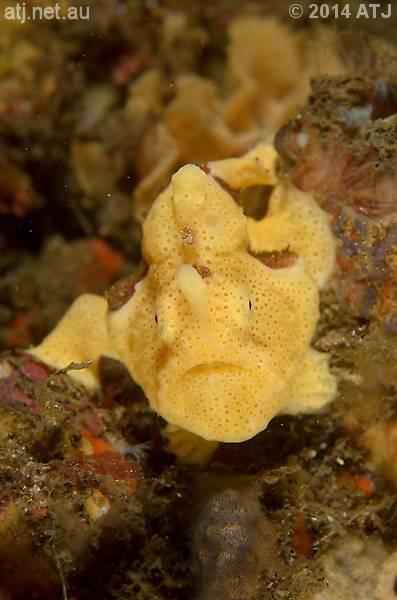
Painted angler, Antennarius pictus, ("Alex"). 20.2 m.

Female pot-bellied seahorse, Hippocampus abdominalis, ("Rosie"). 19.5 m.
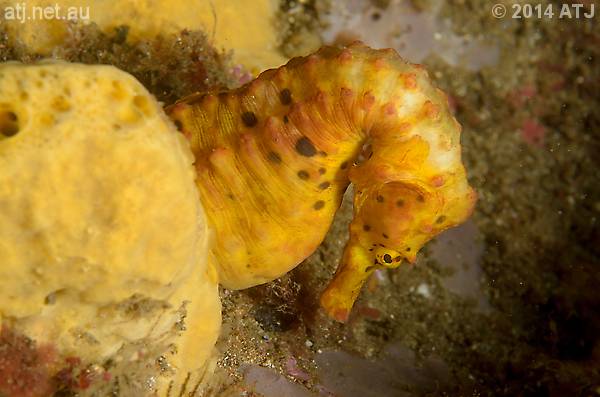
Female pot-bellied seahorse, Hippocampus abdominalis, ("Southern Cross"). 17.7 m.

Male pot-bellied seahorse, Hippocampus abdominalis, ("Richie"). 17.9 m.
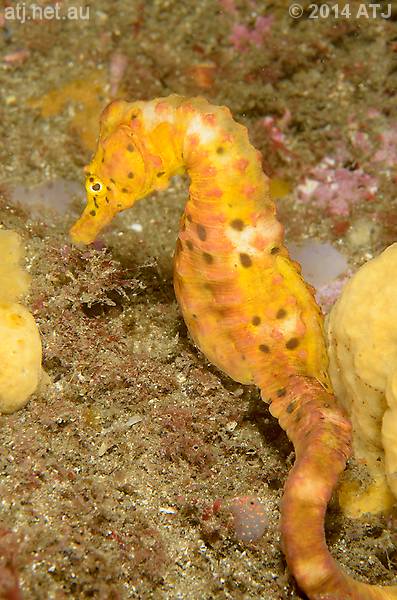
Female pot-bellied seahorse, Hippocampus abdominalis, ("Southern Cross"). 17.9 m.
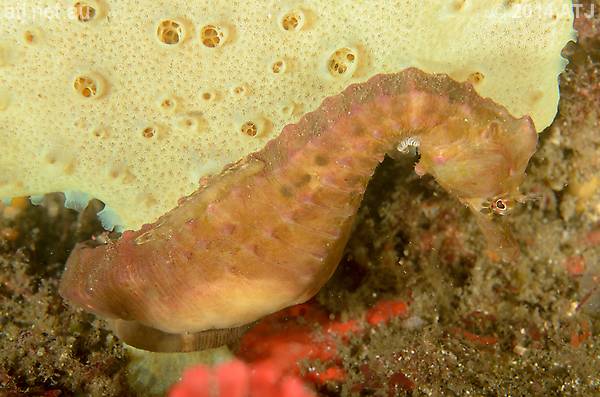
Male pot-bellied seahorse, Hippocampus abdominalis, ("Pierre"). 17.4 m.
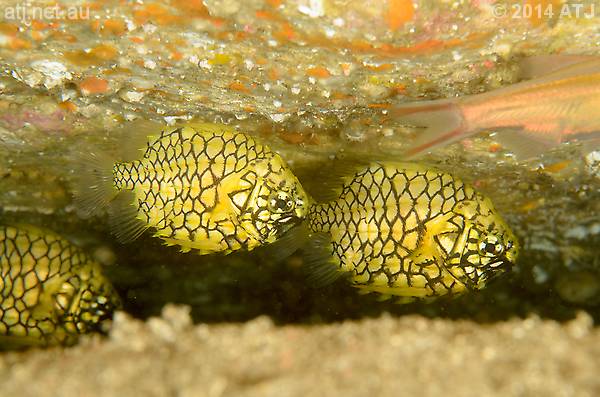
Pineapplefish, Cleidopus gloriamaris. 14.3 m.

Juvenile weedy seadragon, Phyllopteryx taeniolatus. 12.6 m.
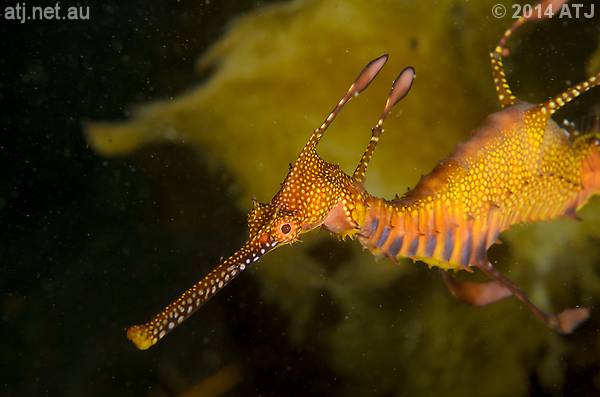
Juvenile weedy seadragon, Phyllopteryx taeniolatus. 12.7 m.
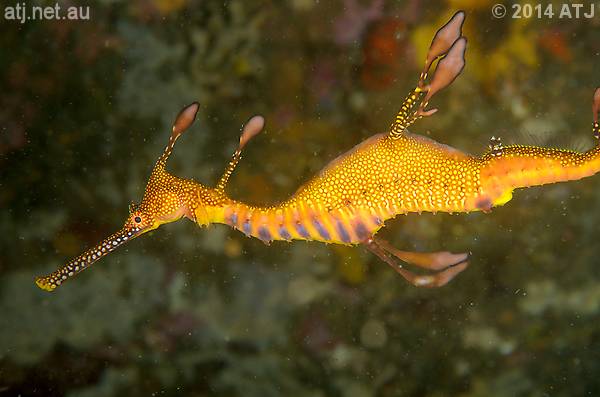
Juvenile weedy seadragon, Phyllopteryx taeniolatus. 12.8 m.

Basket star, Astrosierra amblyconus. 13.5 m.

Sydney pygmy pipehorse, Idiotropiscis lumnitzeri. 12.4 m.
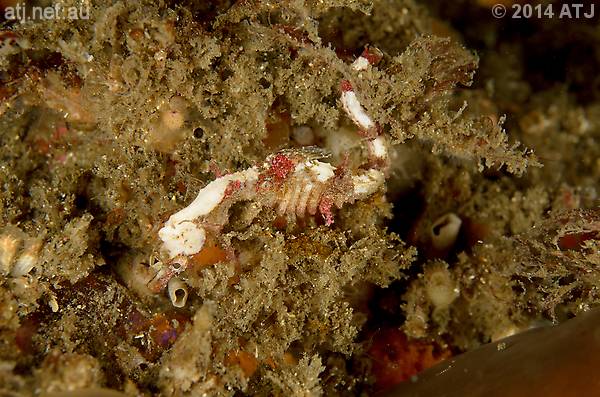
Sydney pygmy pipehorse, Idiotropiscis lumnitzeri. 12.4 m.
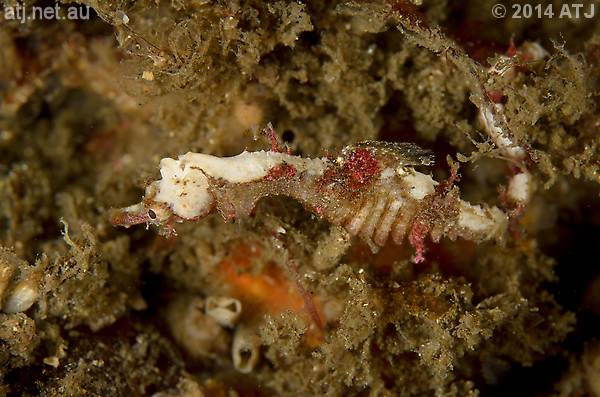
Sydney pygmy pipehorse, Idiotropiscis lumnitzeri. 12.3 m.

Sydney pygmy pipehorse, Idiotropiscis lumnitzeri. 12.3 m.
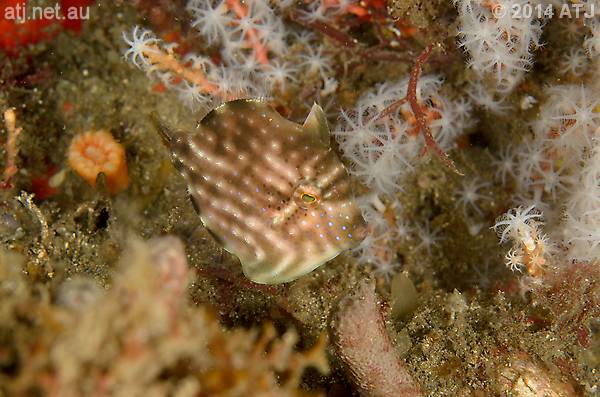
Pygmy leatherjacket, Brachaluteres jacksonianus. 12.7 m.

Pygmy leatherjacket, Brachaluteres jacksonianus. 12.9 m.
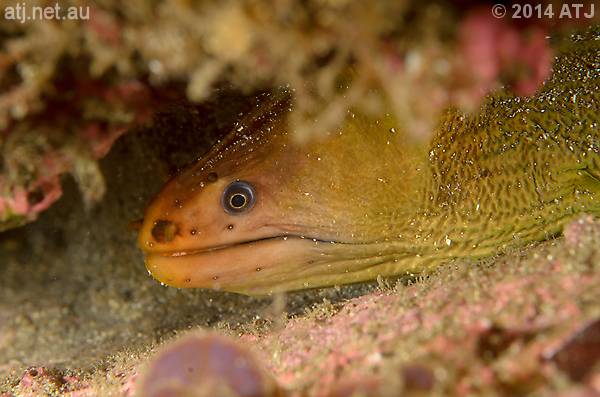
Green moray, Gymnothorax prasinus. 13.1 m.
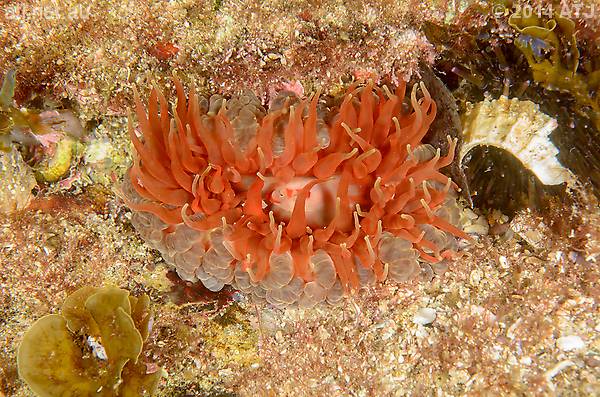
Anemone, Phlyctenanthus australis. 1.4 m.